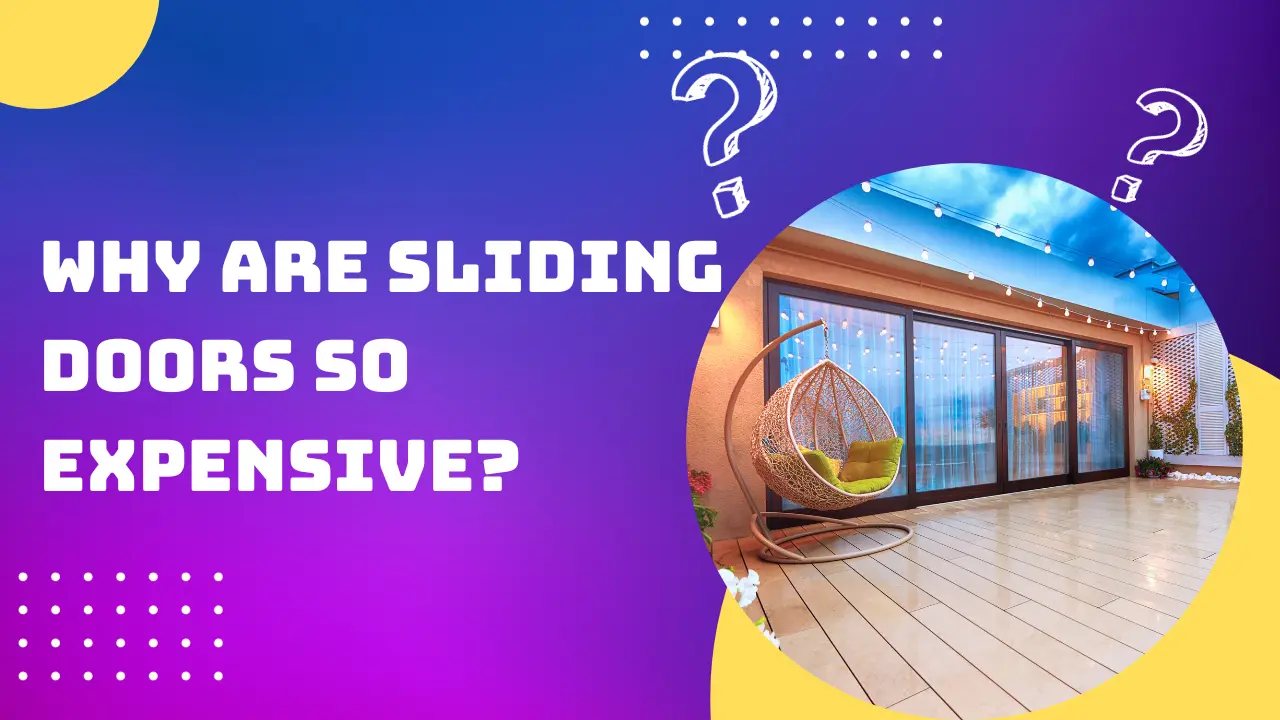Sliding doors, especially those larger and designed to offer unobstructed views, have become a sought-after feature in modern home design. These doors provide functional benefits and add an aesthetic appeal that can transform the ambiance of a space. Nevertheless, homeowners often grapple with the noticeable price tag attached to them.
What makes sliding doors relatively expensive?
- Materials and Craftsmanship
One of the primary factors contributing to the cost of sliding doors is the materials used. High-quality sliding doors are often made of durable materials that defy various external elements. Usually tempered or double-glazed, the glass is thicker and more robust than regular window glass. This kind of glass undergoes specific treatments to enhance its strength and insulation properties. The frames, made of wood, aluminum, or vinyl, are designed to bear the weight of the heavy glass panels and endure wear and tear. Moreover, the craftsmanship implicated in ensuring that these doors operate smoothly adds to the overall cost.
- Technical Complexities
Sliding doors are not just about two panels that move along a track. They encompass a series of intricate mechanisms that ensure seamless operation. The rollers, tracks, and locking mechanisms must be precisely aligned to ensure the door slides smoothly and securely locks in place. This precision demands higher craftsmanship and engineering, subsequently impacting the price.
- Energy Efficiency Features
Many homeowners opt for sliding doors not just for their appearance but for their energy efficiency. Modern sliding doors have double or even triple glazing, UV-resistant coatings, and superior sealing to prevent drafts. While enhancing the door’s insulative properties, these features add to the production costs. However, while the initial investment might be significant, the long-term energy savings can offset the initial cost.
- Customization and Aesthetic Appeal
In a house, sliding doors frequently serve as focal points. Many homeowners use customized alternatives to obtain the desired aesthetic appeal. Customization can affect the final price, whether it be due to a specific glass type, a special frame finish, or specific proportions that differ from industry standards. Given that these doors serve both functional and aesthetic purposes, many people are prepared to make an investment to create the ideal look and feel for their zone.
- Safety and Security Enhancements
Sliding doors, due to their size, can be seen as potential vulnerabilities in a home’s security. Recognizing this, manufacturers often incorporate advanced safety and security features. From shatter-proof glass and multi-point locking mechanisms to alarm sensors and reinforced frames, these features ensure that the doors are not easy entry points for potential intruders. While these enhancements contribute to the door’s cost, they are crucial in ensuring peace of mind for homeowners.
- Architectural Integration and Design Complexity
Modern architecture often challenges the norms, presenting designs that blur the lines between indoors and outdoors. Sliding doors are instrumental in achieving this seamless transition. Integrating them into unique architectural designs sometimes requires additional structural reinforcements or unusual placements. These complexities, especially when dealing with non-standard architectural designs, can add to the cost of the doors, as they may need specialized fixtures, fittings, or unique construction techniques to accommodate the design vision.
- Durability and Longevity
Quality sliding doors are designed to last. The investment isn’t just for a feature that looks good; it’s for a feature that will defy the test of time. Manufacturers often prioritize the longevity of their products, using materials that resist wear, tear, and environmental degradation. The processes ensuring that sliding doors remain functional and aesthetic over long periods, from anti-corrosion treatments to UV-resistant coatings, can elevate their price.
- Brand and Market Positioning
Like all products, brand reputation and positioning play a role in the cost of sliding doors. Established brands, known for their quality, durability, and innovation, might price their products higher. This premium is not just for the brand name, but often for the research, development, and innovation these brands invest in. They are not just selling a door; they are selling a promise of quality, innovation, and post-sale service.
- Environmental and Eco-friendly Innovations
As environmental concerns become paramount, many manufacturers are integrating eco-friendly innovations into their sliding doors. Whether sourcing sustainably harvested wood for frames, using recycled materials, or ensuring energy-efficient production processes, these environmentally conscious measures can influence the cost. Nevertheless, they also ensure that the sliding doors contribute to a home’s overall green footprint, aligning with the values of many modern homeowners.
The expense of sliding doors is a culmination of various factors, ranging from materials and craftsmanship to advanced features and installation complexities. While the initial cost might seem steep, viewing sliding doors as investments is essential. They enhance a home’s aesthetic appeal, improve energy efficiency, and provide an unparalleled indoor-outdoor living experience. The blend of functionality, design, and security that sliding doors offer justifies their price point, ensuring that homeowners receive value commensurate with their investment. When contemplating the inclusion of sliding doors in a property, weighing their long-term benefits against the initial cost is beneficial, often revealing their intrinsic value. Before making any major decisions about home exterior renovations, it’s wise to consider consulting a siding contractor in Portland to ensure you receive expert advice tailored to the local climate and architectural trends.

